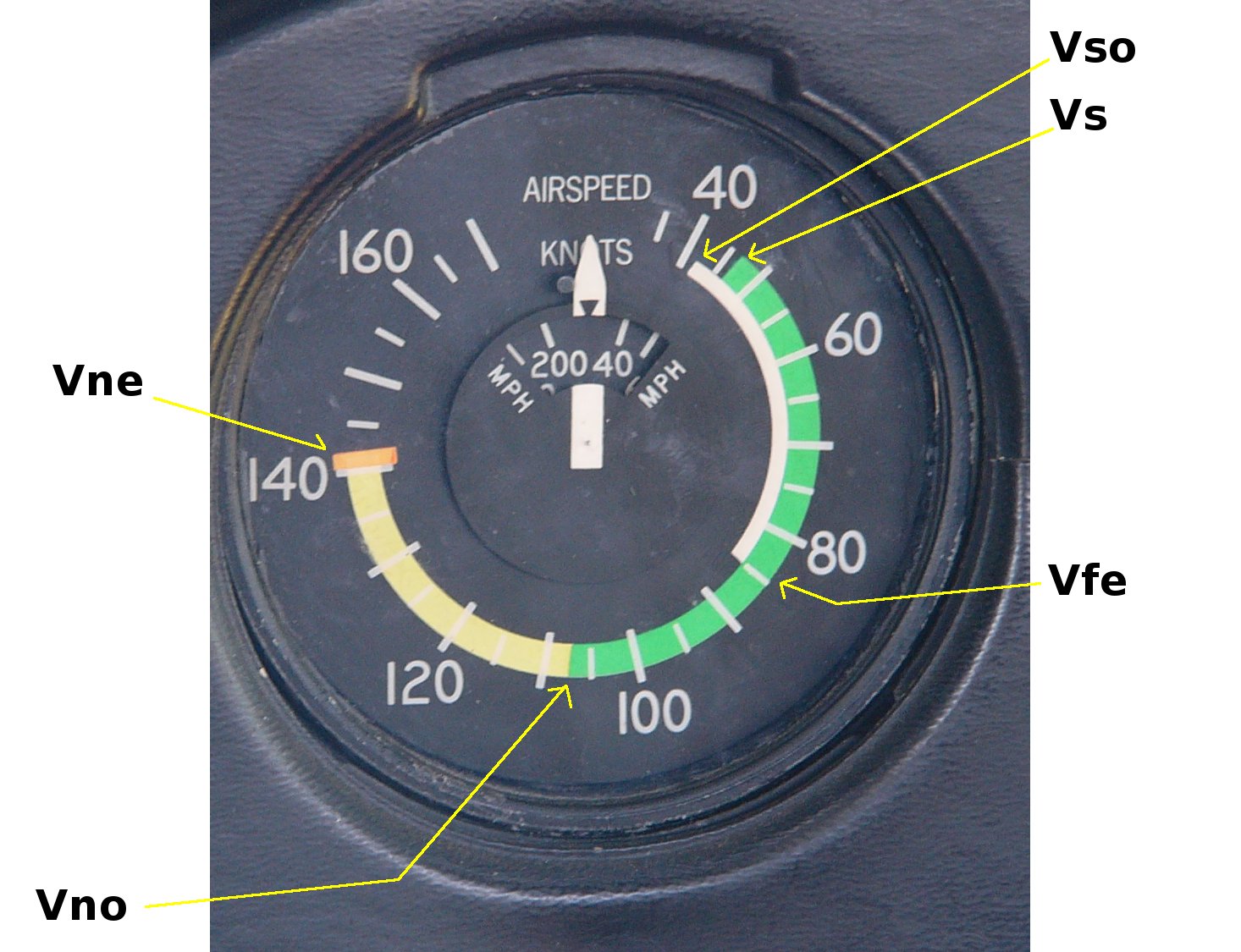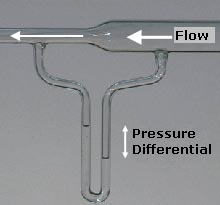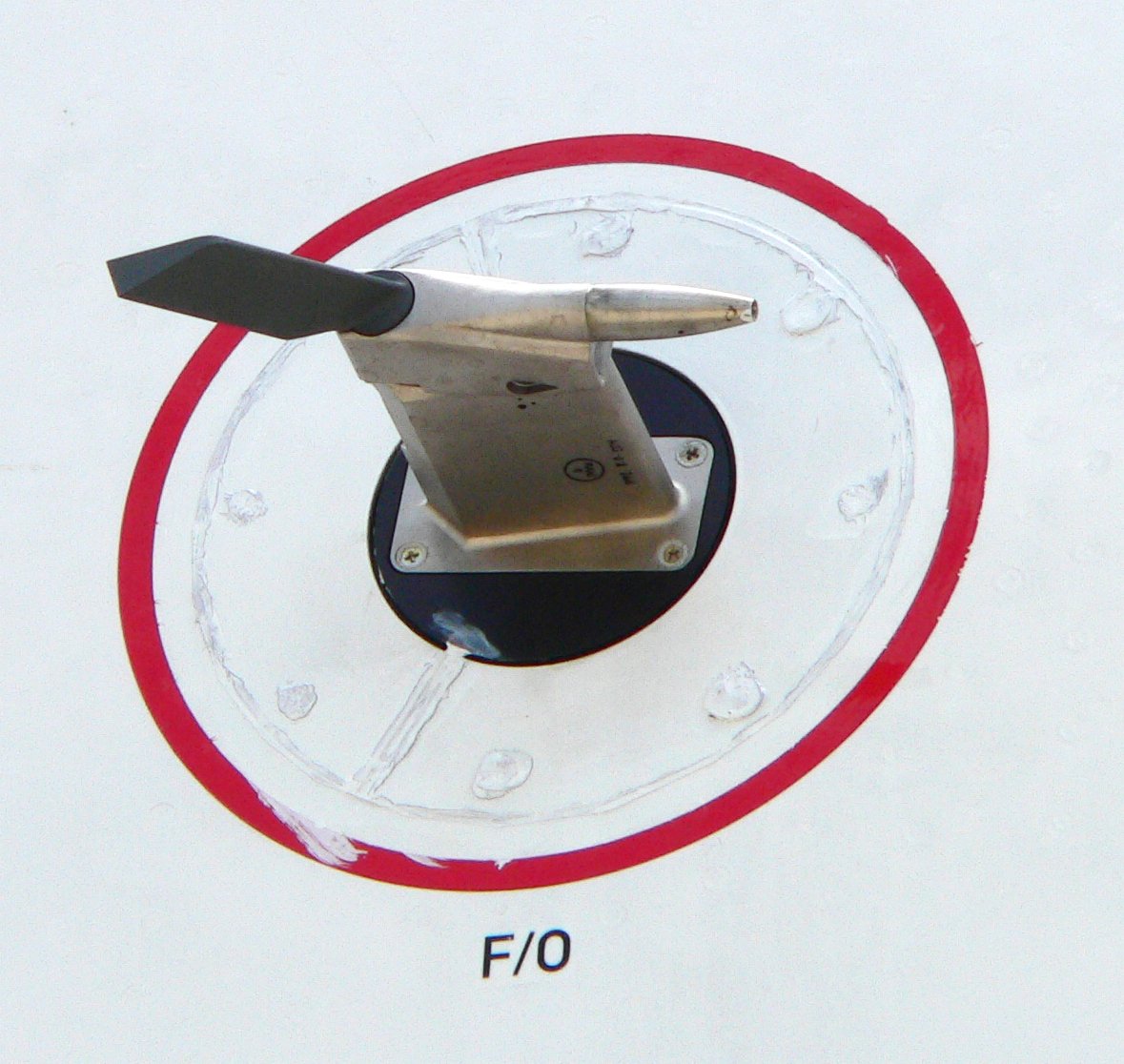|
Indicated Airspeed
Indicated airspeed (IAS) is the airspeed of an aircraft as measured by its pitot-static system and displayed by the airspeed indicator (ASI). This is the pilots' primary airspeed reference. This value is not corrected for installation error, instrument error, or the actual encountered air density, being instead calibrated to always reflect the adiabatic compressible flow of the International Standard Atmosphere at sea level. It uses the difference between total pressure and static pressure, provided by the system, to either mechanically or electronically measure dynamic pressure. The dynamic pressure includes terms for both density and airspeed. Since the airspeed indicator cannot know the density, it is by design calibrated to assume the sea level standard atmospheric density when calculating airspeed. Since the actual density will vary considerably from this assumed value as the aircraft changes altitude, IAS varies considerably from true airspeed (TAS), the relative ve ... [...More Info...] [...Related Items...] OR: [Wikipedia] [Google] [Baidu] |
Airspeed Indicator
The airspeed indicator (ASI) or airspeed gauge is a flight instrument indicating the airspeed of an aircraft in kilometres per hour (km/h), knots (kn or kt), miles per hour (MPH) and/or metres per second (m/s). The recommendation by ICAO is to use km/h, however knots (kt) is currently the most used unit. The ASI measures the pressure differential between static pressure from the static port, and total pressure from the pitot tube. This difference in pressure is registered with the ASI pointer on the face of the instrument. Colour-coded speeds and ranges The ASI has standard colour-coded markings to indicate safe operation within the limitations of the aircraft. At a glance, the pilot can determine a recommended speed (V speeds) or if speed adjustments are needed. Single and multi-engine aircraft have common markings. For instance, the green arc indicates the normal operating range of the aircraft, from ''V''S1 to ''V''NO. The white arc indicates the flap operating range ... [...More Info...] [...Related Items...] OR: [Wikipedia] [Google] [Baidu] |
Aircraft Flight Manual
An aircraft flight manual (AFM) is a paper book or electronic information set containing information required to operate an aircraft of certain type or particular aircraft of that type (each AFM is tailored for a specific aircraft, though aircraft of the same type naturally have very similar AFMs). The information within an AFM is also referred to as Technical Airworthiness Data (TAWD). A typical flight manual will contain the following: operating limitations, Normal/Abnormal/Emergency operating procedures, performance data and loading information. An AFM will often include: * V speeds * Aircraft gross weight * Maximum ramp weight * Maximum takeoff weight * Manufacturer's empty weight * Operating empty weight * Centre of gravity limitations * Zero-fuel weight * Takeoff distance * Landing distance Originally, an AFM would follow whichever format and order the manufacturer felt appropriate. Eventually, the General Aviation Manufacturers Association came to an agreement to ... [...More Info...] [...Related Items...] OR: [Wikipedia] [Google] [Baidu] |
V Speeds
In aviation, V-speeds are standard terms used to define airspeeds important or useful to the operation of all aircraft. These speeds are derived from data obtained by aircraft designers and manufacturers during flight testing for aircraft type-certification. Using them is considered a best practice to maximize aviation safety, aircraft performance, or both. The actual speeds represented by these designators are specific to a particular model of aircraft. They are expressed by the aircraft's indicated airspeed (and not by, for example, the ground speed), so that pilots may use them directly, without having to apply correction factors, as aircraft instruments also show indicated airspeed. In general aviation aircraft, the most commonly used and most safety-critical airspeeds are displayed as color-coded arcs and lines located on the face of an aircraft's airspeed indicator. The lower ends of the white arc and the green arc are the stalling speed with wing flaps in landing ... [...More Info...] [...Related Items...] OR: [Wikipedia] [Google] [Baidu] |
Pascal (unit)
The pascal (symbol: Pa) is the unit of pressure in the International System of Units (SI). It is also used to quantify internal pressure, stress, Young's modulus, and ultimate tensile strength. The unit, named after Blaise Pascal, is an SI coherent derived unit defined as one newton per square metre (N/m2). It is also equivalent to 10 barye (10 Ba) in the CGS system. Common multiple units of the pascal are the hectopascal (1 hPa = 100 Pa), which is equal to one millibar, and the kilopascal (1 kPa = 1000 Pa), which is equal to one centibar. The unit of measurement called '' standard atmosphere (atm)'' is defined as . Meteorological observations typically report atmospheric pressure in hectopascals per the recommendation of the World Meteorological Organization, thus a standard atmosphere (atm) or typical sea-level air pressure is about 1013 hPa. Reports in the United States typically use inches of mercury or millibars (hectopascals). In Cana ... [...More Info...] [...Related Items...] OR: [Wikipedia] [Google] [Baidu] |
Heat Capacity Ratio
In thermal physics and thermodynamics, the heat capacity ratio, also known as the adiabatic index, the ratio of specific heats, or Laplace's coefficient, is the ratio of the heat capacity at constant pressure () to heat capacity at constant volume (). It is sometimes also known as the '' isentropic expansion factor'' and is denoted by (gamma) for an ideal gasγ first appeared in an article by the French mathematician, engineer, and physicist Siméon Denis Poisson: * On p. 332, Poisson defines γ merely as a small deviation from equilibrium which causes small variations of the equilibrium value of the density ρ. In Poisson's article of 1823 – * γ was expressed as a function of density D (p. 8) or of pressure P (p. 9). Meanwhile, in 1816 the French mathematician and physicist Pierre-Simon Laplace had found that the speed of sound depends on the ratio of the specific heats. * However, he didn't denote the ratio as γ. In 1825, Laplace stated that the speed of sound i ... [...More Info...] [...Related Items...] OR: [Wikipedia] [Google] [Baidu] |
Stagnation Pressure
In fluid dynamics, stagnation pressure, also referred to as total pressure, is what the pressure would be if all the kinetic energy of the fluid were to be converted into pressure in a reversable manner.; it is defined as the sum of the free-stream static pressure and the free-stream dynamic pressure. The Bernoulli equation applicable to incompressible flow shows that the stagnation pressure is equal to the dynamic pressure and static pressure combined.Clancy, L.J. (1975), ''Aerodynamics'', Pitman Publishing Limited, London. In compressible flows, stagnation pressure is also equal to total pressure as well, provided that the fluid entering the stagnation point is brought to rest Isentropic flow, isentropically. Stagnation pressure is sometimes referred to as pitot pressure because the two pressures are equal. Magnitude The magnitude of stagnation pressure can be derived from Bernoulli's principle, Bernoulli equation for incompressible flow and no height changes. For any two po ... [...More Info...] [...Related Items...] OR: [Wikipedia] [Google] [Baidu] |
Equivalent Airspeed
In aviation, equivalent airspeed (EAS) is calibrated airspeed (CAS) corrected for the compressibility of air at a non-trivial Mach number. It is also the airspeed at sea level in the International Standard Atmosphere at which the dynamic pressure is the same as the dynamic pressure at the true airspeed (TAS) and altitude at which the aircraft is flying. In low-speed flight, it is the speed which would be shown by an airspeed indicator with zero error.Houghton, E.L. and Carpenter, P.W. (1993), ''Aerodynamics for Engineering Students'', Section 2.3.3, Butterworth-Heinemann, Oxford UK. It is useful for predicting aircraft handling, aerodynamic loads, stalling etc. \mathrm = \mathrm \times \sqrt where is actual air density and is standard sea level density (1.225 kg/m3 or 0.00237 slug/ft3). is a function of dynamic pressure: \mathrm = \sqrt where is the dynamic pressure q = \tfrac12\, \rho\, v^. EAS can also be obtained from the aircraft Mach number and static pre ... [...More Info...] [...Related Items...] OR: [Wikipedia] [Google] [Baidu] |
Poisson Constant
In thermal physics and thermodynamics, the heat capacity ratio, also known as the adiabatic index, the ratio of specific heats, or Laplace's coefficient, is the ratio of the heat capacity at constant pressure () to heat capacity at constant volume (). It is sometimes also known as the ''isentropic expansion factor'' and is denoted by (gamma) for an ideal gasγ first appeared in an article by the French mathematician, engineer, and physicist Siméon Denis Poisson: * On p. 332, Poisson defines γ merely as a small deviation from equilibrium which causes small variations of the equilibrium value of the density ρ. In Poisson's article of 1823 – * γ was expressed as a function of density D (p. 8) or of pressure P (p. 9). Meanwhile, in 1816 the French mathematician and physicist Pierre-Simon Laplace had found that the speed of sound depends on the ratio of the specific heats. * However, he didn't denote the ratio as γ. In 1825, Laplace stated that the speed of sound is ... [...More Info...] [...Related Items...] OR: [Wikipedia] [Google] [Baidu] |
Compressibility
In thermodynamics and fluid mechanics, the compressibility (also known as the coefficient of compressibility or, if the temperature is held constant, the isothermal compressibility) is a measure of the instantaneous relative volume change of a fluid or solid as a response to a pressure (or mean stress) change. In its simple form, the compressibility \kappa (denoted in some fields) may be expressed as :\beta =-\frac\frac, where is volume and is pressure. The choice to define compressibility as the negative of the fraction makes compressibility positive in the (usual) case that an increase in pressure induces a reduction in volume. The reciprocal of compressibility at fixed temperature is called the isothermal bulk modulus. Definition The specification above is incomplete, because for any object or system the magnitude of the compressibility depends strongly on whether the process is isentropic or isothermal. Accordingly, isothermal compressibility is defined: :\beta_T=-\ ... [...More Info...] [...Related Items...] OR: [Wikipedia] [Google] [Baidu] |
Bernoulli's Equation
Bernoulli's principle is a key concept in fluid dynamics that relates pressure, speed and height. For example, for a fluid flowing horizontally Bernoulli's principle states that an increase in the speed occurs simultaneously with a decrease in static pressure, pressure The principle is named after the Swiss mathematician and physicist Daniel Bernoulli, who published it in his book ''Hydrodynamica'' in 1738. Although Bernoulli deduced that pressure decreases when the flow speed increases, it was Leonhard Euler in 1752 who derived Bernoulli's equation in its usual form. Bernoulli's principle can be derived from the principle of conservation of energy. This states that, in a steady flow, the sum of all forms of energy in a fluid is the same at all points that are free of viscous forces. This requires that the sum of kinetic energy, potential energy and internal energy remains constant. Thus an increase in the speed of the fluid—implying an increase in its kinetic energy—occur ... [...More Info...] [...Related Items...] OR: [Wikipedia] [Google] [Baidu] |
Pitot Tube
A pitot tube ( ; also pitot probe) measures fluid flow velocity. It was invented by French engineer Henri Pitot during his work with aqueducts and published in 1732, and modified to its modern form in 1858 by Henry Darcy. It is widely used to determine the airspeed of aircraft; the water speed of boats; and the flow velocity of liquids, air, and gases in industry. Theory of operation The basic pitot tube consists of a tube pointing directly into the oncoming fluid flow. Pressure in the tube can be measured as the moving fluid cannot escape and stagnates. This pressure is the stagnation pressure of the fluid, also known as the total pressure or (particularly in aviation) the pitot pressure. The measured stagnation pressure cannot just by itself be used to determine the fluid flow velocity (airspeed in aviation) directly. However, with a measured static pressure as well it can be determined by the use of Bernoulli's equation which states: :Stagnation pressure = static pr ... [...More Info...] [...Related Items...] OR: [Wikipedia] [Google] [Baidu] |
Supersonic
Supersonic speed is the speed of an object that exceeds the speed of sound (Mach 1). For objects traveling in dry air of a temperature of 20 °C (68 °F) at sea level, this speed is approximately . Speeds greater than five times the speed of sound (Mach 5) are often referred to as hypersonic. Flights during which only some parts of the air surrounding an object, such as the ends of rotor blades, reach supersonic speeds are called transonic. This occurs typically somewhere between Mach 0.8 and Mach 1.2. Sounds are traveling vibrations in the form of pressure waves in an elastic medium. Objects move at supersonic speed when the objects move faster than the speed at which sound propagates through the medium. In gases, sound travels longitudinally at different speeds, mostly depending on the molecular mass and temperature of the gas, and pressure has little effect. Since air temperature and composition varies significantly with altitude, the speed of s ... [...More Info...] [...Related Items...] OR: [Wikipedia] [Google] [Baidu] |





